When Tom Cruise wrenched open the throttle to full-lock as Pete “Maverick” Mitchell in “Top Gun,” he inspired generations of people to chase the thrill of speed. With vapor trails curling behind him and the golden San Diego sky in the background, there was no one cooler in 1986 than the high-flying naval aviator.
Surprisingly, this scene doesn’t have anything to do with F-14s and dogfighting. I’m talking about the movie’s repeated shots of Cruise on his red-and-black Kawasaki GPZ 900R. Top Gun’s on-screen romance didn’t take my breath away, but that motorcycle certainly did.
There’s a strong culture of car lovers in the ranks of U.S. military, and every so often that affection leaks into pop culture via the big screen. Hollywood does a good job of paying homage to military motorheads, whether it’s with a fast-paced chase scene or the sight of individual Willys components disappearing into cardboard boxes.
Of all the car-obsessed U.S. service members to ever grace the screen, these are our favorites.
Virgil Hilts (“The Great Escape”): Triumph TR6R Trophy
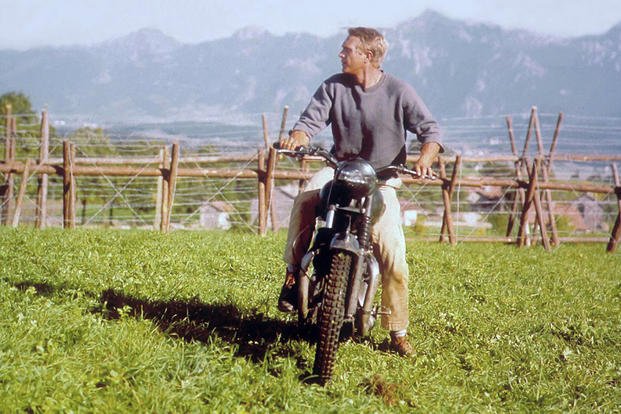
One of the first times Hollywood gave us a crossover between the worlds of war movies and gasoline addiction was none other than “The Great Escape.” For a movie set in a prisoner of war camp, the timeless World War II classic seriously overdelivered on the amount of time dedicated to a motorcycle chase scene. We owe that to the fictional Captain Virgil Hilts.
A role as big as the Cooler King demands a larger-than-life star, and Steve McQueen (also known as the King of Cool) fits the bill perfectly. The movie’s death-defying motorcycle stunts almost didn’t happen. According to a story from the automotive gurus at Hagerty, a studio attorney forced McQueen to choose between his two passions, racing and acting. The clever solution was to act in movies that just so happened to have extreme action sequences written into them once McQueen joined the cast.
In reality, none of the prisoners who escaped Stalag Luft III did so with a motorcycle, and German soldiers certainly didn’t ride Triumphs. It’s thrilling to watch a motorcyclist break free from a prison camp and tear off on a stolen motorcycle, though, and Hilts will forever be an icon of cinema characters.
The motorcycling website Ride Apart reports that of the three 1963 Triumph TR6R motorcycles used to film “The Great Escape,” the only known survivor is located at Triumph’s headquarters in Hinckley, England.
According to Express, Hilts’ character was based on an American named William Ash. His exploits didn’t involve high-speed motorcycle evasion from the SS or daring jumps over barbed wire fences, but his life was every bit as extraordinary as the one portrayed by McQueen.
Walt Kowalski (“Gran Torino”): Ford Gran Torino
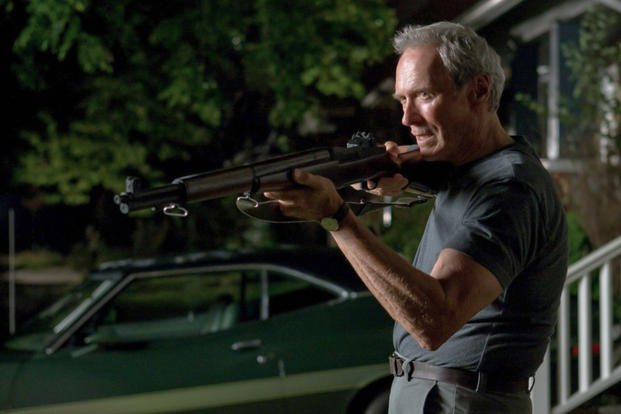
Walt Kowalski is a good reminder that veterans can carry both skills and baggage long after they take off their uniform for the last time. He’s an unlovable grump who ends up proving that he’s a pretty special guy, after all. It’s only fitting that his prize possession, a 1972 Ford Gran Torino, is in the same boat.
Kowalski is obviously a car nut; after all, he’s managed to keep his classic muscle car in pristine shape for several decades. He’s also willing to do things up to and including pulling an M1 Garand on local gang members to protect his ride.
When the kinder and distinctly-less-racist Korean War veteran leaves the car to his teenage neighbor, Thao Vang, it completes his character arc. Everyone at the reading of Kowalski’s will understands that there is no greater honor in his eyes than being trusted with his pride and joy (even if it comes with a few caveats).
The Gran Torino is the perfect car for Clint Eastwood’s character. It, like old vets and the Korean War, fades into the background all too often, overshadowed by the Mustang and underappreciated by collectors. Most muscle car enthusiasts probably wouldn’t even know about it if not for the movie.
According to Hemmings, the 1972 Ford Gran Torino came with a 302 V8 or a variety of more powerful engine and carburetor options to choose from. Still, the car came along at a time when emissions standards and gas prices seemed to be conspiring against horsepower.
The Gran Torino might never achieve top-tier status among car enthusiasts, but it certainly has a cherished place in the hearts of movie buffs.
Maverick (“Top Gun”): Kawasaki GPZ900R
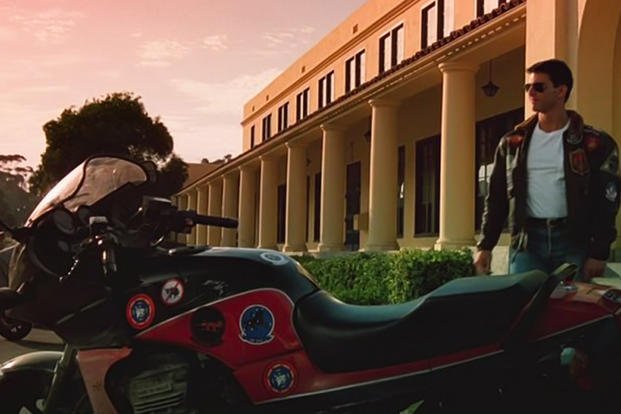
Maverick’s need for speed clearly doesn’t begin and end on the runway. His Kawasaki GPZ900R — the first Ninja — is a revolution in motorcycle technology, a race bike for the streets, and a perfect way for the young daredevil to get around town (and show off that epic bomber jacket, of course).
If Maverick even owns a car in the original movie, we never see it. The Kawasaki and its rev-happy exhaust note accompany the young pilot through Miramar’s west gate and alongside the flight line where he famously shakes his fist at a departing F-14. It keeps audiences in suspense when he careens through traffic followed by Charlie in her Porsche 356 (a replica, as AutoMedia reports). It even joins in when the two enjoy a late-night roadside smooch-fest. And when Maverick seeks counsel from Viper after Goose’s death, it’s the Ninja that carries him.
The GPZ900R is a cool motorcycle today, but in 1986 it was ground-breaking. According to the automotive website Silodrome, the GPZ900R was “the fastest production motorcycle in the world at the time and the first stock road bike to exceed 150 mph.” It only makes sense that a real-life speed freak would pull strings to get his hands on one, especially when it’s so well-suited to his character.
Mike Vaughan, then director of marketing for Kawasaki in the U.S., told Hagerty that the Ninja almost didn’t make it into the “Top Gun.” He was reluctant to give away new motorcycles with no guarantee of screen time, and only warmed up to the idea of selling them at a shallow discount when the studio threatened to use a Honda instead. That might have been a bluff, though, because he claimed that Tom Cruise insisted on using the latest and greatest from Kawasaki all along.
Radar (“M*A*S*H”): Willys M38A1
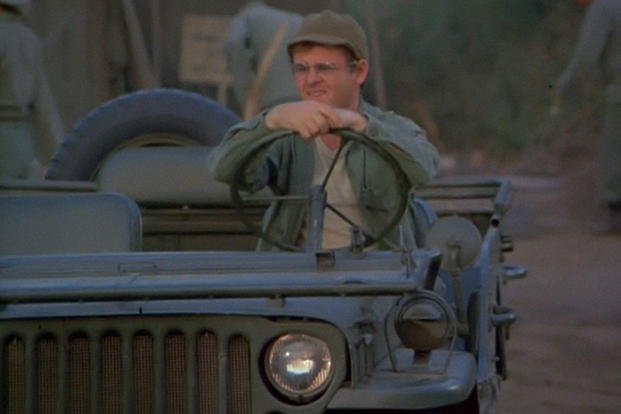
How far would you go to score a set of wheels? Radar, one of the most lovable characters on the classic TV show “M*A*S*H,” is either desperately in love with cars or just plain desperate to steal an Army Willys one piece at a time—the same way Johnny Cash got his Cadillac.
Long-running “M*A*S*H” fan site MASH4077TV points out that it’s in the 12th episode of season one that the ingenious corporal cooks up a scheme to dismantle an M38A1 assigned to the 4077th Mobile Army Surgical Hospital and mail it home piece by piece in cardboard boxes.
Maybe he’s bored, maybe he loves the lightweight 4x4, or maybe he figures his family could use reliable transportation back in Iowa. Whatever his motive, it’s one of the best pranks to come out of the most hilarious field hospital of the Korean War.
B.J. Hunnicutt gave us a touching moment when he rode off into the sunset on a yellow spray-painted Indian Scout, but nobody at the 4077th went to greater lengths in the name of automotive love than Radar.
B.A. Baracus (“The A-Team”): GMC Vandura
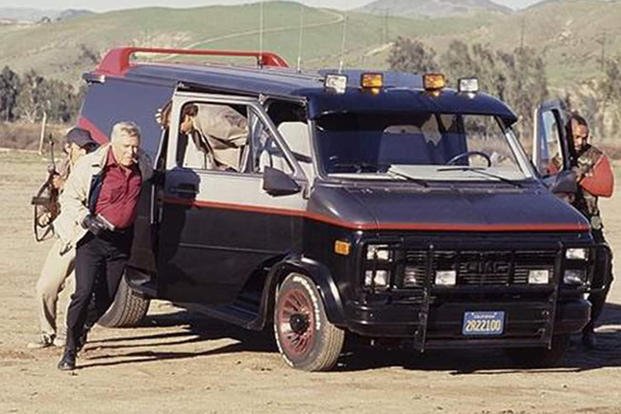
It’s a tale as old as time: a crack commando unit gets sent to prison for a crime they didn’t commit, promptly escape to the Los Angeles underground, and become soldiers of fortune. We’ve all been there.
Luckily for the A-Team, B.A. Baracus provides the perfect vehicle for their freelancing operation. His van has seats for the whole team, room for weapons and radio equipment, a sunroof, and — as HotCars points out — suspension that’s custom-tuned to account for all Baracus’ gold chains.
In addition to having one of the coolest vans in TV history, Baracus is more than capable of wrenching, welding, and driving just about anything. The rest of the A-Team is glad to have his skills available, even if the people who own the cars he works on aren’t so fortunate.
The GMC Vandura never looked better than it does in two-tone gray over black with a red stripe and wing. It’s the perfect mobile command center, and Baracus is more than happy to kick off a hot pursuit in the boxy utility vehicle.
B.A. Baracus was a veteran, and so was the man who played the role in “The A-Team.” According to the Department of Defense, Mr. T enlisted in the Army in 1975 and graduated at the top of roughly 6,000 recruits. As noted by Britannica, Mr. T was something of a real-life action hero who spent his career teaching strong morals and values to children through television and music.
James Reece (“The Terminal List”): Toyota Land Cruiser
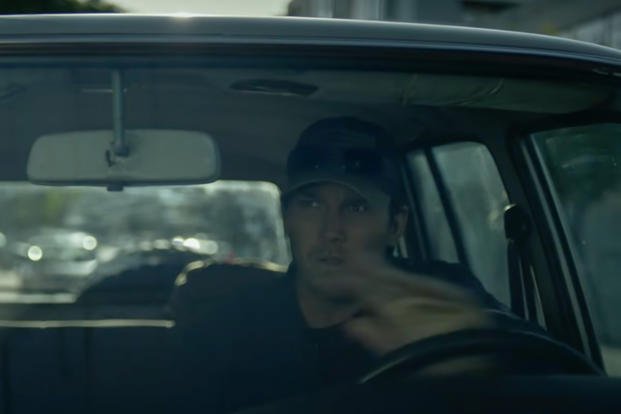
“The Terminal List” is rich with product placement and aspirational gear, and the main character’s POV is among the best. James Reece’s FJ62 Land Cruiser isn’t just one of Toyota’s greatest hits, it’s one of the most coveted off-roaders ever built.
Sadly for Toyotaphiles, Reece’s Land Cruiser gets precious little screen time. There’s even an acknowledgment in a conversation between characters that the truck is far too recognizable for someone whose life and mission depend on keeping a low profile. It makes the most of its opportunities, though, by getting Reece around San Diego in the first few episodes and helping to dispose of a would-be assassin in episode three.
That villain’s actor is not some random extra; he’s played by Jack Carr, a retired Navy SEAL and the author of “The Terminal List” and six other books. The Land Cruiser Reece we see on screen is very similar to Carr’s own FJ62, which is heavily modified to his exact specifications. Among other things, those specs include a Chevrolet LS3 out of a Corvette.
The FJ62 was an updated version of the Land Cruiser’s third generation. According to Popular Mechanics, American-market trucks came with conventional four-wheel drive, an automatic transmission, and a fuel-injected 4.0-liter straight six. The easiest way to distinguish an FJ62 from an FJ60, though, is by two square headlights on each side. As usual, Toyota didn’t give the U.S. market access to the FJ62’s best options, like cable-activated locking differentials and the 12H-T turbo diesel engine.
Reece’s Land Cruiser also got Method wheels, a Front Runner roof rack, multiple LED light bars, custom bumpers, and a winch for “The Terminal List.”
Sarge (“Cars”): Willys MB
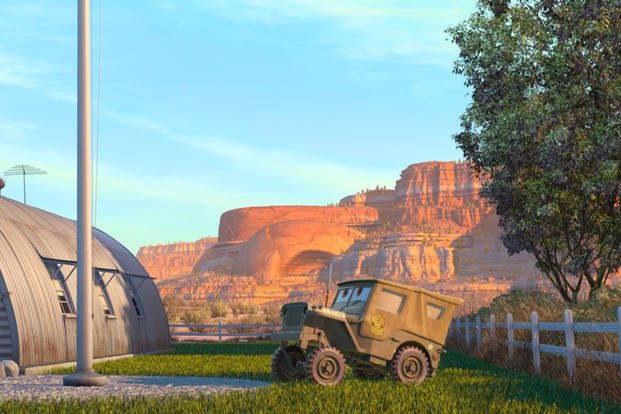
Sarge gets extra honors because he isn’t just someone who loves cars – he is a car. According to Pixar Cars Wiki, the character has appeared in 22 movies, TV episodes, and video games within the “Cars” franchise. He’s a tribute to what is arguably America’s greatest military vehicle and an accurate representation of certain retired sergeants major who have trouble taking the rank off.
Funny enough, Sarge’s best friend is an old Volkswagen bus. Fillmore the hippy hauler does a good job of mellowing Sarge out and the two are an unlikely pair of not-so-fast friends. Maybe they’re both just too slow to meet anyone else.
According to Kaiser Willys, Sarge is one of more than 300,000 Willys MBs built between 1941 and 1945 (hence Sarge’s license plate number: 41WW2). The precursor to the modern Jeep came with a humble but reliable 2.2-liter four-cylinder engine that only managed to make 60 horsepower. The MB’s real power came from its Dana four-wheel-drive system, 285-mile range, and stone-simple components that refused to quit on GIs across Europe and the Pacific.
Sean Boswell (“The Fast and the Furious: Tokyo Drift”): Ford Mustang
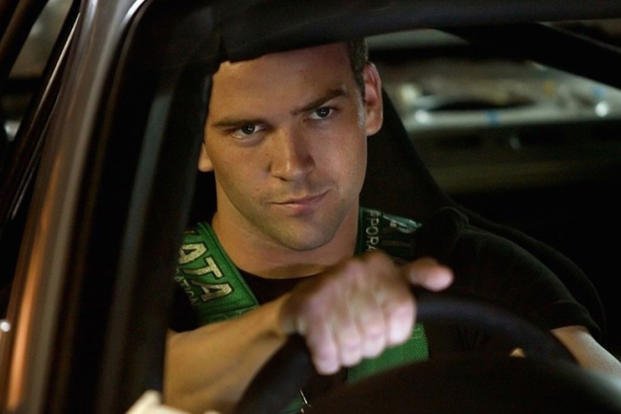
This is an honorable mention because Sean Boswell, the protagonist of “The Fast and the Furious: Tokyo Drift,” isn’t in the military. His dad is active-duty Navy and stationed in Tokyo, where he apparently keeps his issued M9 and the remains of an unrestored Ford Mustang in his tiny off-base apartment (best not to overthink it and just enjoy the show).
Sean saves the day by swapping an RB26 out of a crashed R33 Nissan Skyline GT-R into his old man’s Mustang, making it one of the coolest and most controversial cars with military ties ever to hit the silver screen.
The unholy marriage of Ford and Nissan really exists, but it’s not what you see drifting in the movie. According to Road & Track, that was all done by Mustang stunt cars with V8s.
Closing Credits
These icons of the big (and little) screen have inspired audiences for generations. They turned service members into action heroes and almost certainly boosted recruiting efforts.
They also reminded us that people in the military are still allowed to have individual personalities – and, if they’re lucky, incredibly cool cars. If nothing else, we hope this has inspired you to pop a bag of popcorn and either revisit an old favorite or watch one of these classics for the first time.
Want to Know More About the Military?
Be sure to get the latest news about the U.S. military, as well as critical info about how to join and all the benefits of service. Subscribe to Military.com and receive customized updates delivered straight to your inbox.











